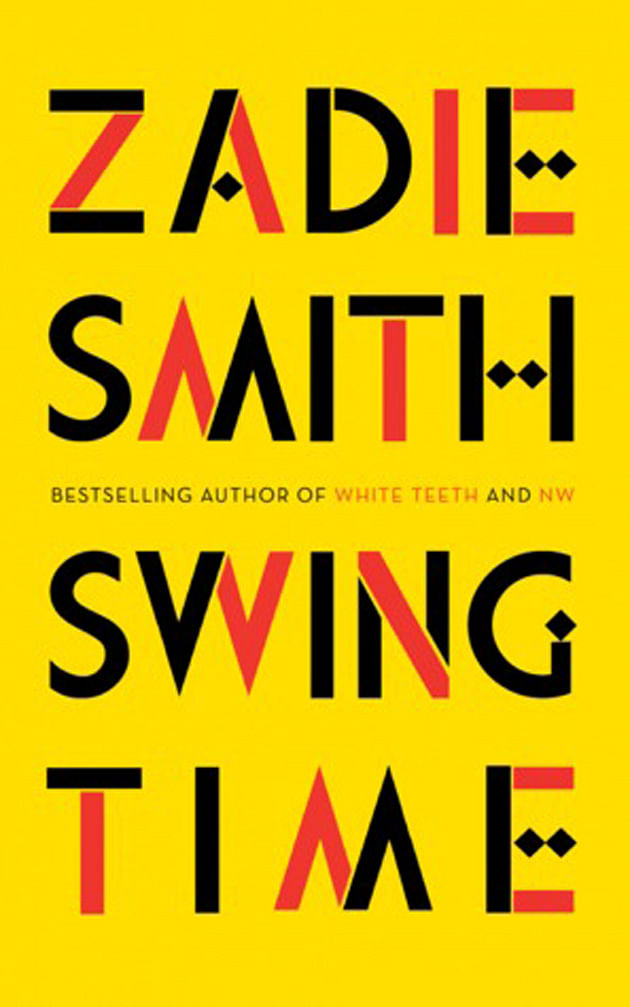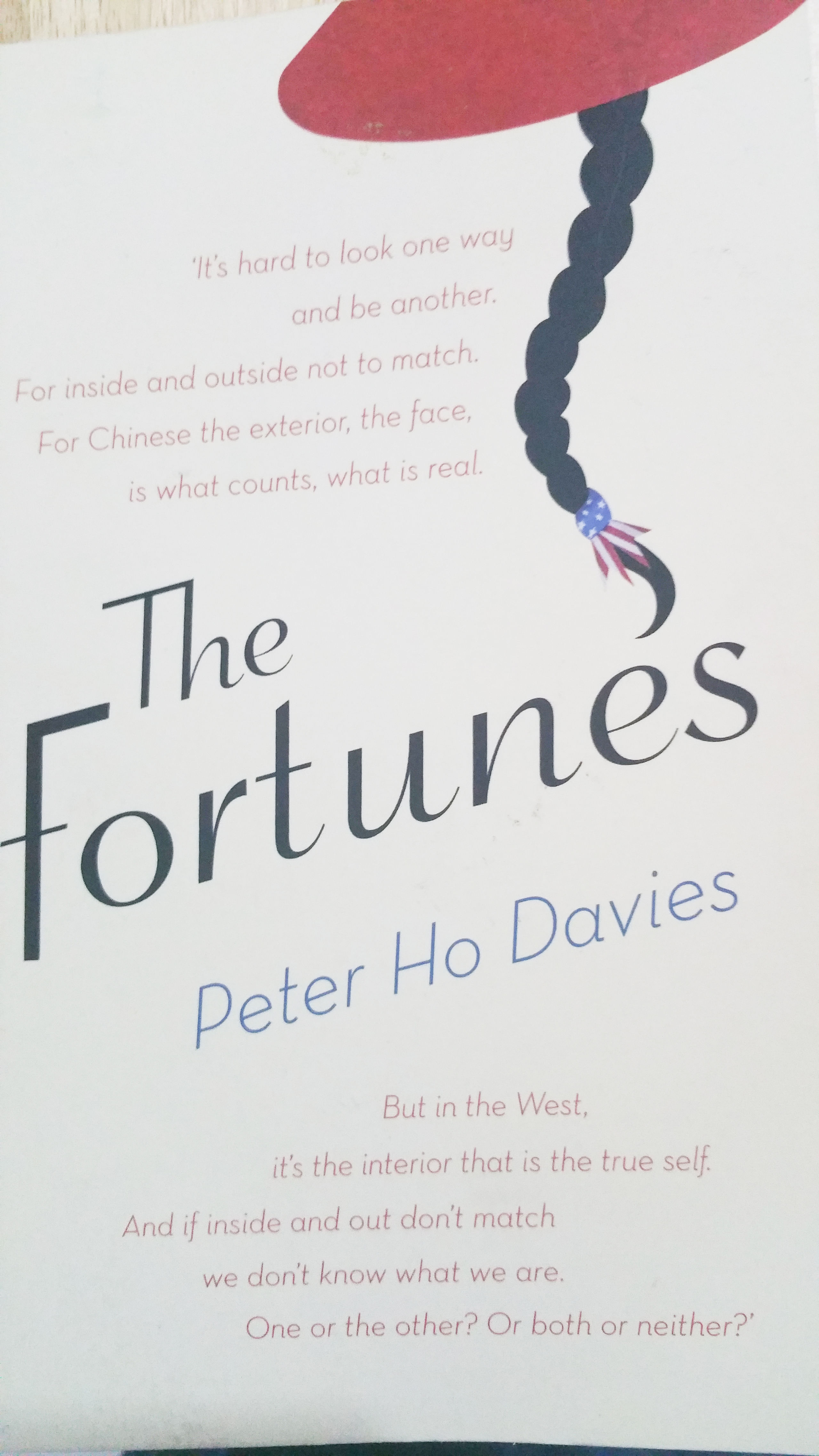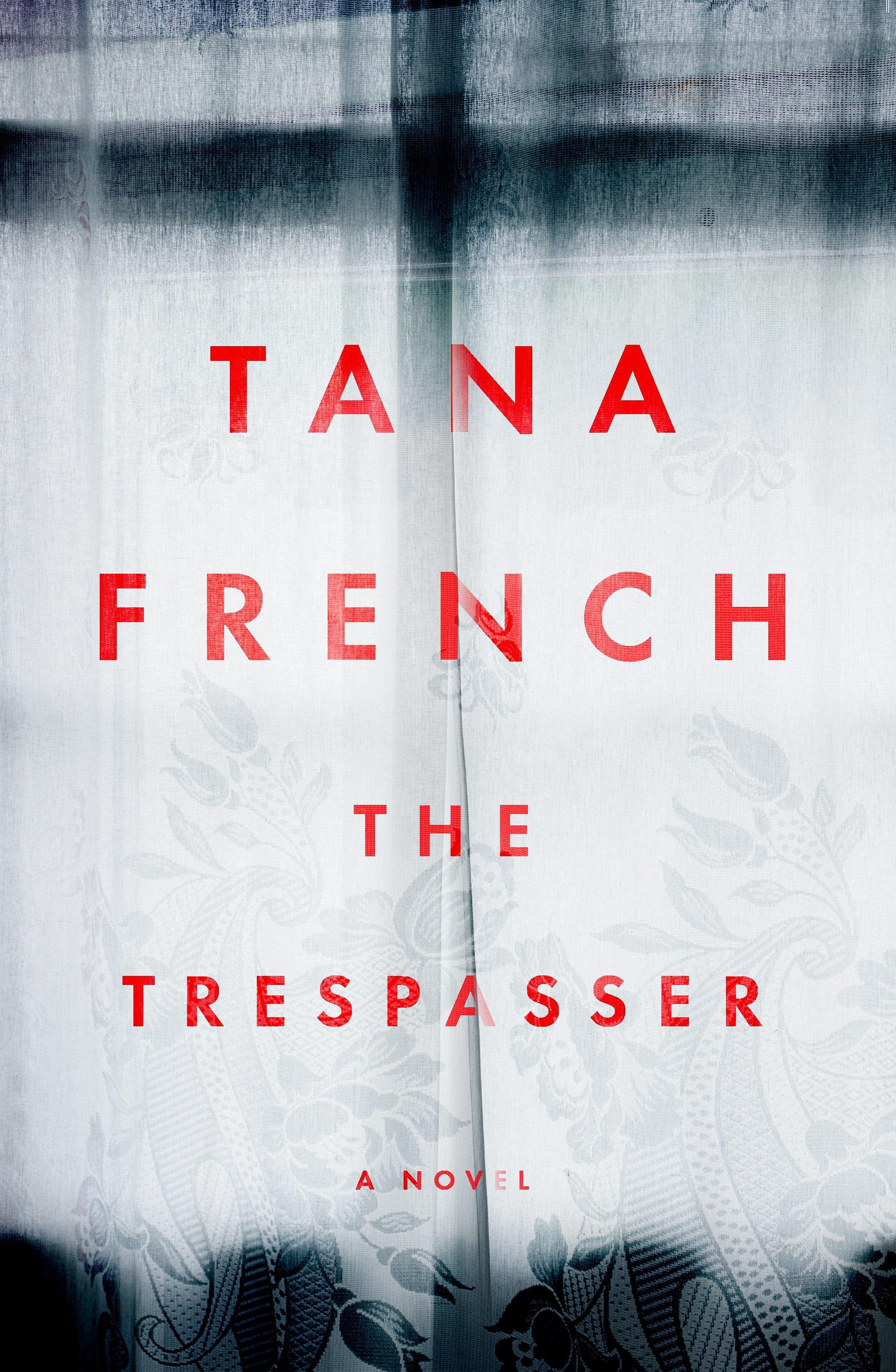Book Of The Month
Dancing with issues of race and gender
Swing Time by British author Zadie Smith tackles thorny topics against the backdrop of a flawed friendship

FICTION
SWING TIME
By Zadie Smith
Hamish Hamilton/ Paperback/ 453 pages/ $26.92 /Books Kinokuniya/4.5 stars
At the nadir of her life, a woman of mixed race turns to a beloved film from her childhood, the 1936 musical Swing Time, to watch her hero Fred Astaire tap dance.
But she is confronted with something awful she has blocked from her memory - he is in blackface.

There are many things that award-winning British author Zadie Smith is trying to do here in her fifth novel: challenge concepts of race, class, gender and other themes that take the pulse of the zeitgeist.
To weave the rhythms of all these immense issues into a single beat would be an incredible feat of cho- reography. Smith not only manages it, but she also does so with the legendary sprezzatura that Astaire himself brought to the stage.
The narrative swings back and forth through time, opening in the aftermath of a unknown disaster caused by the unnamed narrator, then oscillating between recent events and her childhood in working-class London.
She meets her best friend Tracey in Saturday dance classes at church. As the only two girls of mixed race, they are drawn to each other.
The spirited, rebellious Tracey displays a gift for dance; less so the narrator, a wallflower overshadowed by her strong-willed friend and domineering mother, whose lofty aspirations of social justice lack real-world practicality.
The two girls grow apart as their lives diverge. Tracey goes to dance school, hoping to make it big on Broadway, while the narrator becomes a personal assistant to Aimee, a Madonna-esque pop star.
When her employer decides to build a school for poverty-stricken girls in an unnamed West African country, she is tasked with the logistics of realising this white saviour vision.
At the heart of the novel is her relationship with Tracey, which is explored with an intricacy that reminds one of Elena Ferrante's Neapolitan novels.
Smith's portrait of a flawed female friendship rings true - all the love, the envy, the adulation and rivalry and insecurity, the slow sorrow as sacred bonds unravel.
One of the most poignant moments Smith captures is the warmth of Tracey's body during a musical as she runs backstage into the arms of the narrator, a stagehand, to get changed.
Smith also renders the narrator's relationships with her mother and with Aimee with an affecting intensity. In contrast, male-female relationships fare less well. A major flaw of the novel is that the affair which culminates in its disastrous opening is so unconvincing.
The novel is also a love letter to dance, to the movements of the body that are at once primordial and transcendent, yet inextricably bound to culture.
The narrative thrums with joy as it draws connections among dance through the ages - from The Nicholas Brothers' signature jump-splits, to Michael Jackson's Thriller, to the kankurang, a Mandinka tradition in which an orange-clad machete- wielding dance takes boys to be circumcised.
But though the narrator would like to believe that "Nijinsky would understand Michael Jackson", there are barriers dance cannot break.
The classic movie musicals she loves are rife with blackface minstrelsy and dancing mammies, and she derives secret pleasure from watching Judy Garland playing a Zulu.
For all her talent, Tracey never makes it further than the chorus line. Embittered, she eventually gives up dance, becoming instead a single mother and Internet troll.
Smith interrogates notions of race, underscoring how nothing is absolute. Growing up, the narrator aligns herself with the likes of singers Nina Simone and Billie Holiday, black artists left out by white society.
Yet in West Africa, her hosts say laughingly: "Even though you are a white girl, you dance like you are a black."
For all her belief in dance transcending boundaries, the narrator herself struggles with empathy. She unintentionally shames a teacher in front of her class and almost exposes a colleague as gay, just to prove her point.
Caustic and sometimes so self- righteous as to be unlikable, she is never able to find somewhere she fits in. Even when she is a grown woman, in her heart beats that unrequited love which young girls everywhere bear for the things they cannot be part of. If you like this, read: Americanah by Chimamanda Ngozi Adichie (Fourth Estate, 2014, $19.26, Books Kinokuniya), in which a young Nigerian woman leaves her hometown of Lagos to study in America, where she must navigate culture shock and racial politics to build a new life.
FICTION
WHATEVER HAPPENED TO INTERRACIAL LOVE?
By Kathleen Collins
Ecco/Paperback/192 pages/$27.27/Books Kinokuniya/4 stars

Whatever Happened To Interracial Love? is a stylish and politically charged collection of short stories that comes decades after its author's death in 1988.
Kathleen Collins was 46 years old when she died of breast cancer, but in her lifetime, she made films, created plays and wrote works of fiction.
But her stories went largely unheard - only one of her short stories was published - until now.
It is fortunate then that Collins' voice resurfaces now, at a time when it is once more sorely needed, as America struggles with burgeoning divisiveness in all quarters, from race to political leaning.
Whatever Happened To Interracial Love? is about uniting characters amid diversity, a timely balm for a world racked by prejudice and proof that, even at the bleakest of moments, divisions can eventually be bridged.
The collection's title story is perhaps its crown jewel.
In it, a pair of roommates - one white and dating a black poet, the other black and seeing a white Freedom Rider - live in an apartment on the Upper West Side.
It is 1963, a pivotal year for America's civil rights movement. All around them, America is on the move: More than 200,000 citizens descend on Washington, DC, to demand civil and economic rights for African Americans, Martin Luther King delivers his iconic "I have a dream" speech and activists embark on efforts to register black voters.
By setting the story in this turbulent time, Collins exposes not just the cracks between black and white, but also within these communities.
The black woman's Freedom Rider boyfriend has his jaw dislocated in a Mississippi jail by white prisoners displeased at seeing one of their own challenge segregation.
And the woman herself, swept up in the excitement of the civil-rights movement, shocks her proper parents, who like many others, will see "their children abandon a lifetime of de-ghettoising".
"Their sons will go to jail for freedom (which in their parents' minds is no different from going to jail for armed robbery, heroin addiction, pimping and other assorted ethnic hustles)," Collins writes.
She twines race and relationships - romantic and familial - beautifully for most of the book, exploring how identity can have an impact on how one falls and stays in love.
Then there is the burning desire among some of her coloured characters to break free from stereotypes, even as others embrace them and their political power to make a statement on what they stand for.
In How Does One Say, a young black girl cuts her hair, bent on reclaiming her identity, but faces her father's disapproval that it "made her look... 'just like any other coloured girl'".
Political and intimate, Collins' collection is a sharp study of race, romance, stereotypes and the burden of communal expectations - the perfect read for today's world.
If you like this, read: Homegoing by Yaa Gyasi (Penguin Books, 2016, $29.91, Books Kinokuniya), one of the best debut novels of last year. The family saga traces the growth and legacy of slavery through two half-sisters and their descendants.
Nur Asyiqin Mohamad Salleh
FICTION
THE FORTUNES
By Peter Ho Davies
Hodder & Stoughton/Paperback/268 pages/$26.95/ Books Kinokuniya/3.5 stars

Nearly 10 years after his maiden novel, The Welsh Girl, was long- listed for the Man Booker Prize, Peter Ho Davies returns to the issue of national and racial identity in his second novel.
Davies, raised in Coventry, Britain, to Welsh and Chinese- Malaysian parents, but now based in Michigan in the United States, examines what it means to be Welsh in his first novel.
In his second, he dissects what it means to be Chinese in the US, through four stories over a 150-year sweep of history.
Three are based on real-life individuals. In the novel's longest story, Gold, Hong Kong-born Ah Ling tries to find his way in California ("Gold Mountain") after being sold there in the 1860s.
He becomes a servant to real-life railway baron Charles Crocker, apparently playing a part in his boss' decision to hire Chinese labourers to build a railroad.
In Silver, the life of Anna May Wong, the first Chinese screen star in Hollywood, is reimagined in vignettes. She infamously lost out to Austria-born Luise Rainer for the lead role in Pearl S. Buck's The Good Earth for looking "too Chinese". In Jade, a friend looks back on the life of Vincent Chin, 27, who was killed in 1982 by Detroit car workers who thought he was Japanese.
In the final story Pearl, John Smith, son of a US war veteran and a Singapore Girl, feels like the proverbial "banana" when he goes to Guangzhou, China, to adopt a baby.
Characters from the first three stories are mentioned in the final one, which cuts close to life by describing John as a writer whose novel about the transcontinental railroad in the US "got bogged down".
Davies has many pithy things to say about the issue of identity.
Chinese Americans are created when the sojourners could not return after the communists' victory in China in 1949, he observes.
"They - all of them - are Chinese American now, not just because America has finally, begrudgingly allowed them to be, but because China has closed to them."
Ah Ling, musing over how the Chinese had become the common enemy of groups such as the Irish, English, German, Italians in the US, thought: "We made them white."
In The Welsh Girl, Briton's most famous prisoner, Nazi Rudolf Hess, asks his German half-Jew interrogator, "Are we who we think we are or who others judge us to be?"
These questions run through The Fortunes. Wong signs off autographs with "Orientally Yours", but asserts that the only Oriental thing about her is her face.
But unlike The Welsh Girl, a page-turner with a rich sense of place and a compelling narrative with echoes of The English Patient, The Fortunes plods along moodily, with embittered characters who cannot resist the odd sardonic racist joke.
"Chinese in movies aren't inscrutable. They're unsc***able," said Wong, referring to a ban on mixed marriages in the US then.
What unites the four lead characters in this thoughtful, though languorous, novel is their quest to be freed from the burden of representation.
If you like this, read: The Welsh Girl by Peter Ho Davies (Hodder & Stoughton, 2007, $17.40, Books Kinokuniya), a coming-of-age story set in Wales at the end of World War II that looks at what it means to be out of place.
Ho Ai Li
FICTION
THE TRESPASSER
By Tana French
Hodder & Stoughton/Paperback/469 pages/ $29.95/Books Kinokuniya /3 stars

Irish crime writer Tana French returns with a wintry sixth instalment in her acclaimed detective novel series dubbed by fans as the "Dublin Murder Squad".
It is fine to read the new title without reading the others - the connection between each novel is tangential. Each story centres on a different crime with no prior references and is told from the point of view of a different detective.
The Trespasser is readable as its atmospherics and twisty plot elevate what appears to be a typical whodunnit into an unpredictable murder mystery.
The lead detective is Antoinette Conway who, as the only female and non-white member of her squad, is convinced her colleagues are on a vendetta to sabotage her career.
They spit in her coffee and steal her witness statements in what ironically appear to be childish schoolboy antics, but she could not help but question: Is there something more sinister behind their actions?
She and her empathetic partner Stephen Moran strike what could be career gold when handed a murder case in which the victim, receptionist Aislinn Murray, was described as looking like a "dead Barbie".
On the surface, it seems like a typical lovers' tiff gone awry. Murray's new boyfriend, Rory Fallon, is a bashful bookshop owner with secrets to hide and a penchant for cooking up scenarios in his head.
As French writes, in one of the many soliloquies in Conway's head: "What-if-maybe c**p is for weak people. It belongs to the ones who don't have the strength to make actual situations go their way, so they have to hide away in daydreams where they can play at controlling what comes next."
But they soon realise it could be more than an open-and-shut case - especially when their senior colleague overeagerly sells the virtue of a "quick solve".
Conway, too, realises she has met the victim before in a previous investigation, while her comrade spins theories involving gangsters.
French shines in her prose and her sense for psychological drama, as well as in her understanding of police procedurals and detective interrogation techniques.
Indeed, her writing has garnered high praise from Gillian Flynn of the best-selling psychological thriller novel Gone Girl (2012). The Guardian, too, has compared her interrogation scenes with those of the acclaimed crime writer John Le Carre.
But The Trespasser falls short in its pacing, even though French is adept at leaving seemingly innocuous breadcrumbs along the way.
Perhaps half the battle was lost when she settled on a blatantly unlikable lead character. Conway, understandably, has skeletons in her closet, but it is grating how much was devoted to her loner streak, volatile temper and general contempt for the world. And the "eureka" moment, itself full of conjectures and stemming from unresolved daddy issues, does not feel too convincing. If you like this, read: A Most Wanted Man by John Le Carre (Hodder & Stoughton, 2014, $15.46, Books Kinokuniya). The espionage novel - adapted into a film starring the late actor Philip Seymour Hoffman - tackles themes such as the international war on terror and money laundering.
Walter Sim
FICTION
IN TRANSIT: AN ANTHOLOGY FROM SINGAPORE ON AIRPORTS AND AIR TRAVEL
Edited by Ruihe Zhang and Yu-Mei Balasingamchow
Math Paper Press/Paperback/324 pages/$18.30/ Books Kinokuniya/4 stars

In Transit is a robust collection of 35 stories and poems from Singapore about home and belonging. It features the work of newer writers as well as stalwarts such as Alvin Pang and Cyril Wong.
Readers picking through its rich offerings will find plenty to savour.
Poems include Judith Huang's tenderly evocative Moorsong, Yeow Kai Chai's dizzying A-to-Z "zoetrope" of Terminal 3 and a characteristically tongue-in-cheek one by Joshua Ip about airplane passengers packed like sardines.
One of the more memorable stories is Stephanie Ye's deftly written Meat Bone Tea, about a young woman who moonlights as a dining companion at Terminal 3.
Another gem is Jeremy Tiang's short story, Terminal. Set in Changi Airport's Terminal 3 and told from the perspective of an airport cleaner, it does a wonderful job of capturing that uniquely Singaporean brand of awkwardness.
One cleaner called Ashton, for instance, "always has an orange plastic comb sticking out of his back pocket like it's 1994 or something"; his love interest is Crystalline, an air stewardess whose name made me cringe.
Tiang's unflinching eye on the truth also means his characters feel like real people, not caricatures.
And his wry remarks are impeccably timed, making readers uncomfortable, but never dwelling on their subject matter long enough to grow indulgent.
"Even the plants are sculpted and culled by the gardening team," Tiang's narrator says, "so it's not like they're doing anything meaningful by spreading pollen."
In Transit is generally a strong collection, but some of its pieces come across as a bit gimmicky.
The use of Hokkien and Chinese in Philip Holden's short story Aeroplane feels gratuitous and the prose is weighed down by clunky attempts at metaphors of flight.
Some writers also lapse into a lazy similitude, a bit too eager to yoke their writing to figures such as Icarus and Eve.
And there is a slightly exasperating aura of preciousness about some otherwise well-written pieces in the anthology.
But because In Transit holds a mirror to certain aspects of Singapore society, the discomfort that arises from reading some of the stories might well stem from readers' unresolved insecurities entwined with their feelings about being Singaporean. American academic Diana Fuss was right when she said that "sameness, not difference, provokes our greatest anxiety".
To me, Boey Kim Cheng's Between Stations encapsulates the spirit of In Transit - airy, unmoored, yet bound and defined by the same old quarrel with one's homeland.
Readers who have spent much time dwelling on the concept of home might well come to the end of the anthology and feel just as lost as ever - the fog does not quite lift.
But while it does not offer any huge revelations, it is full of trenchant observations and elegantly composed meditations that roll readers towards the overwhelming question: Where do we go from here?
Insofar as it gathers and examines the contradictions and indeterminacies of coming and going, In Transit is a success: an important, long-overdue addition to the Singapore shelf. If you like this, read: It Never Rains On National Day by Jeremy Tiang (Epigram Books, 2015, $18.20, Books Kinokuniya), his debut collection of short stories exploring issues of identity and belonging.
Toh Wen Li
FICTION
SHOW ME A MOUNTAIN
By Kerry Young
Bloomsbury Circus/Paperback/378 pages/$40.99/ Books Kinokuniya/3 stars

Set in Kingston, Jamaica, during the politically turbulent 1930s, as the inequality between affluent Chinese migrant shopkeepers and the black working class escalated into explosive riots in 1938, this novel fervently casts its eyes on the ambivalences in race and class relations through the eyes of Fay Wong, a Chinese-Jamaican girl.
The premise of this last book in Kerry Young's historical trilogy is loosely based on her experiences as a child of Chinese and African parentage.
Spurned by her estranged parents, nine-year-old Fay grows up searching for identity and acceptance.
Her Jamaican mother has control of the family mansion, but projects her racial self-hatred into abuse and jealousy of her lighter-skinned daughter; her Chinese father retreats into gambling and remains emotionally distant.
Fay finds solace in fellow misfits at a private boarding school and encounters with men - a Jamaican worker espousing communist ideals and a British expatriate - which introduce her to the pulsating threads of change and in society in the lead-up to the labour rebellion of 1938.
The novel is set up beautifully: Kingston, filled with the "sweet, tangy scent of the eucalyptus" and "Negril sunsets witnessed from a cottage high on the West End cliffs", is painted in lush detail.
Sparse, staccato sentences lend the novel a sense of sensual urgency as Fay wrests with the pull of forces beyond her control and Young comfortably captures the sounds of different cultural worlds in dialogue laced with Jamaican patois.
It hits home particularly hard when Fay is forced to confront her racial and socio-economic privilege as her encounters with men unfurl into events with more devastating consequences and Young is adept at fleshing out female characters that are a foil for Fay.
Though she looks down on prostitute Gloria and resents how men are drawn to her, Fay later realises that they both harbour the same "deep wounds of sorrow" despite their class differences.
The vulnerability of her mother, initially portrayed as haughty and distant, is also revealed.
But the book is finally weighed down by its over-ambitious aims, with subplots that fan out beyond personal negotiations with race and class to wider commentaries on politics and colonialism.
One subplot involving an arranged marriage and forced espionage is particularly formulaic, resorting to the use of hastily drawn characters to advance the novel.
Young also does her readers no favours when links between the story's plot and themes become too explicitly drawn.
It is especially contrived when a self-pitying Fay says: "Actually I was just like Jamaica. Colonised by the British, used for their own ends and now abandoned to my fate."
The novel's flaws might be more forgivable if one has read the two earlier books in the trilogy, which flesh out some of the thinner characters that make an appearance here. But read on its own, this book can be a bit of a trudge, especially in its last few chapters.
If you like this, read: Lucy by Jamaica Kincaid (Farrar Straus & Giroux, 2002, $21.26, Books Kinokuniya), a coming-of-age tale about a girl from the West Indies who migrates to North America to work as an au pair.
Yuen Sin
FICTION
OUT OF BOUNDS
By Val McDermid
Little, Brown/Paperback/421 pages/ $29.95/ Books Kinokuniya/3.5 stars

A group of teenage joyriders steal a Land Rover Defender outside a club one night.
When an accident has the vehicle somersaulting over a roundabout, only the driver survives - but he falls into a coma.
A routine DNA check reveals that 17-year-old Ross Garvie may be the clue to solving a young woman's rape and murder 22 years ago.
Enter detective chief inspector Karen Pirie, head of Police Scotland's Historic Cases Unit and also the hero of three other novels by Scottish crime writer Val McDermid.
She has crafted a sufficiently complex and well-paced narrative with undercurrents of social commentary.
What helps the story along is that DCI Pirie is also a likable protagonist: a capable, fiery detective who will not shy away from unorthodox means to solve a cold case. But it is the authentic portrayal of her grief that will win readers over.
Months ago, she lost detective sergeant Phil Parhatka, her partner at work and the love of her life, when he was killed in the line of duty.
Moving to a new home, she grew fond of taking walks on sleepless nights, leading her to find a group of Syrian refugees who have taken to gathering at a bridge.
They have nowhere to meet and no money or work, and she becomes the unlikely figure who lends them a hand in facing an uncertain future.
As this takes place in the background, her personal experience of loss pushes her in fighting for truth and justice on the job.
Besides the present-day car crash that ignites a search for Garvie's parents, Pirie comes to learn of suspicious circumstances surrounding the death of an unemployed man, Gabriel Abbott.
When she finds out that he lost his mother in an unsolved terror attack years ago, she feels an "odd kinship" with him.
So despite the case being classified as suicide, she quietly picks up the trail ending in Abbott's death by gunshot on a bench.
Although the novel starts strong and progresses with the depth of a satisfying mystery, it peters out near the end.
But at least, with its maze of dead ends and twists, the journey is worth it.
If you like this, read: The Tres- passer by Tana French (Hodder & Stoughton, 2016, $29.95, Books Kinokuniya), about a pair of detectives who are investigating a killing from a lovers' tiff, only to find that the victim was involved in a previous police investigation.
Seow Bei Yi
Join ST's Telegram channel and get the latest breaking news delivered to you.
A version of this article appeared in the print edition of The Sunday Times on January 01, 2017, with the headline Dancing with issues of race and gender. Subscribe

